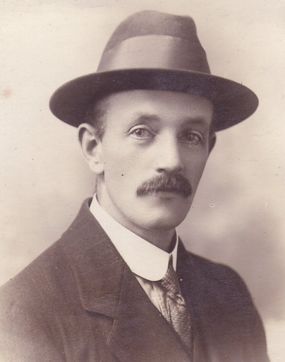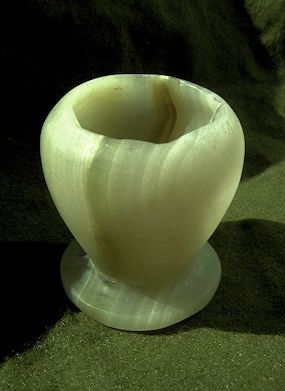Page 11 of 11
The Chalice of Magdalene
The Marian Chalice
Graham returned to the caves to examine the eagle statue. It was completely solid and carved from stone, so there was no way anything could have been hidden inside. However, it had once stood on a pedestal so something may have been placed inside that. The problem was that this had been destroyed in 1920 when a local businessman named Walter Langham decided to buy the statues from the landowner to have them erected in his garden. When he tried to remove them from the caves, they proved too heavy and the ropes broke. The eagle statue was badly damaged and the base was completely smashed. However, Graham discovered something in a contemporary guide book that was both exciting and disheartening. When the base broke apart, it was found to be partly hollow and inside something was discovered which was described as "an interesting curio" – "a small green cup made from stone."

This had to have been the artifact thought to be the Marian Chalice that Thomas Wright had hidden. This seemed to prove that Graham had successfully solved Wright’s cryptic trail of clues. However, completely by accident, someone had already found the artifact decades before. As far as Graham could discover, Walter Langham had no idea what the object was. Had he sold it or thrown it away? Was it lost forever?
After further research, Graham discovered that Langham had considered the cup to be an interesting oddity because of the unusual circumstances in which it had been found. He gave up trying to move the statues but luckily he had kept the cup. When Graham traced and contacted Langham’s descendants, he was delighted to discover that it was still in their possession. In fact, they had it stored away with junk in the attic of their home in the English town of Rugby in the county of Warwickshire. Nevertheless, like their ancestor, they had absolutely no idea what it was.
The artifact turned out to be a small stone vessel made from green alabaster, about the size and shape of an eggcup. Although there is no way of knowing whether it was the original chalice found by the Empress Helena in Jerusalem in 323 BC, it seems almost certainly to be the one possessed by Fulk Fitz Warine and kept at the White Castle in Whittington during the Middle Ages and passed on down to Thomas Wright who hid it in the 1850s. It closely matches the only known depiction of it in Arthur Mede’s illustration, except that it now has no lid.
It has been analyzed by the British Museum who identified it as a Roman ointment or scent jar dating from the first century AD. Although it does not match the traditional representations of the Holy Grail, it does date from the actual time of Jesus. Furthermore, it is an alabaster scent vessel, which is exactly what the Chalice of Magdalene is said to have been. It is just possible, therefore, that the fascinating trail of clues had led to the cup which once held the blood of Christ - a cup that in legend became known as the Holy Grail.
Graham examines the damaged remains of the eagle statue in the labyrinth of caves in the White Cliff at Hawkstone Park.

Walter Langham, who discovered the cup by accident in 1920.
The small alabaster cup found in the eagle statue at Hawkstone Park. (Click on image for large size picture.)
The cup that may have held the blood of Christ. (Click on image for large size picture.)










